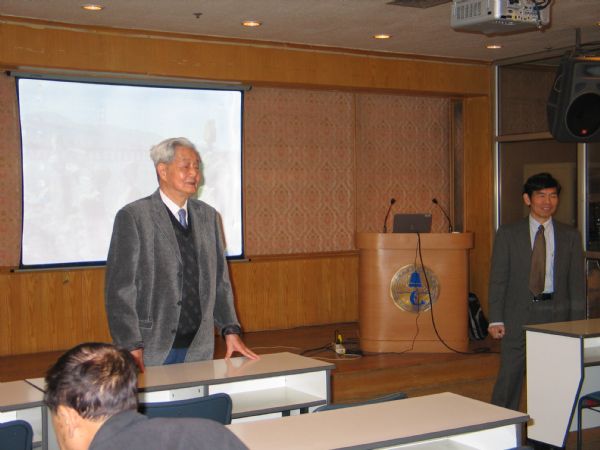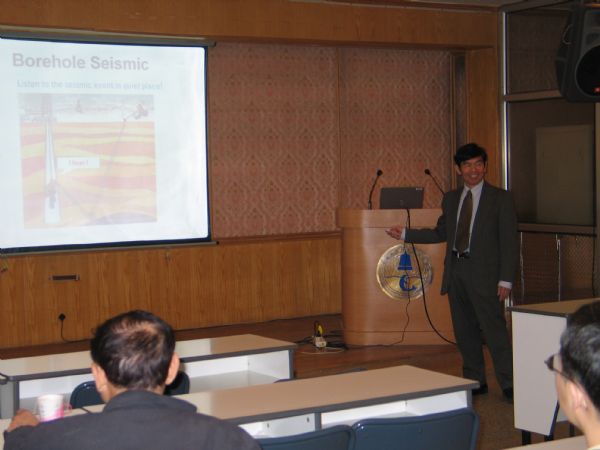

(From Xu Delong) Prof. S. K. Steve Chang, from Schlumberger K. K., Japan, visited our institute on March.27, 2007 to the invitation of Prof. Wang Xiuming. Prof. Steve is one of South & East Asia Regional Lecturers of Society of Exploration Geophysics. The goals of the society are: 1. Recognizing an individual's contributions to advance the science and technology development of geophysics. 2. Fostering a sense of communication among geophysicists by providing opportunities for local meetings and exchange of ideas. 3. Encouraging students by providing the opportunity to discuss scientific and career issues with a leading expert. And this visit to our institute is one of the academic exchanges held by SEG in South & East Asia area. The lecture Prof. Steve gave us titled "Recent advances in borehole geophysics applications". In his lecture, Prof. Steve reported recent development in borehole seismic and sonic technologies, which has expanded borehole geophysics beyond the traditional applications. For example, it is now possible to enhance drilling decisions using real-time borehole seismic while drilling. A drill collar is instrumented with ruggedized sensors and a high-precision clock synchronized to an up-hole clock. Data are acquired during the "quiet" time while the drillers are adding new drill pipe sections. Real-time check shots can help drillers drastically reduce depth uncertainties for locating faults, abnormal pressure zones, and target formations. On numerous occasions depth corrections ranging from tens of feet up to 1000 ft have enabled the drillers to avoid intermediate casing runs and unnecessary sidetracks, saving days of rig time. Real-time waveforms sent up-hole via the MWD (measurement while drilling) telemetry not only provide data for quality control but also allow drillers to look ahead of the drill bit to anticipate drilling targets and drilling hazards. It is now common practice to acquire wire line borehole seismic data using a large array of multi-component sensors. As a result, walk-away, walk-around and 3D VSP datasets of up to a million traces can be effectively acquired. Some of the advanced applications for this new technology include high-resolution imaging, anisotropy estimation and risk management for sub salt drilling. Placing the array borehole sensors in listening mode, the data can be used to map the source locations of micro-seismic events in real-time during hydraulic fracturing of tight formations. Hydraulic fracture monitoring from micro-seismic events can provide vital data for optimizing field development plans. Event locations can also provide information to revise hydraulic fracturing parameters to achieve desirable results. A high fidelity sonic logging tool not only produces reliable compressional and shear velocity logs but also provides information for anisotropy and stress-strength related formation perturbation near the well bore. This information can be used to calibrate rock stress and mechanical properties which are key parameters in planning drilling and completion jobs. This presentation included many vivid examples to illustrate the applications of the borehole geophysics. After the lecture, Prof. Steve had a warm discussion with the audience


